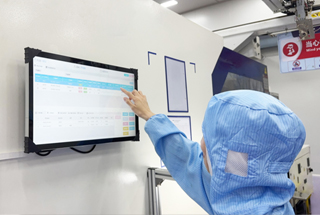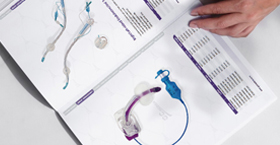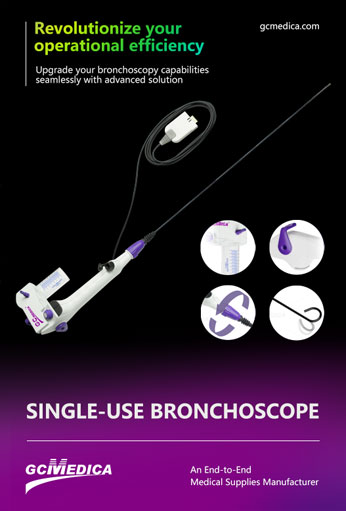Flexible bronchoscopes come in a variety of diameters and working lengths to suit different patient populations and procedural needs. The principal measurement is the outer diameter (OD) of the insertion tube, which determines both the patient interface (adult vs. pediatric vs. neonatal) and the maximum size of the working channel. Working channel diameter directly influences which accessories can be passed—suction catheters, biopsy forceps, brushes, or laser fibers—and dictates suction flow rate. Finally, the overall working length must be sufficient to reach target airway segments but not so long as to compromise maneuverability or increase dead‑space when ventilating through the channel.
Adult bronchoscopes typically have an OD between 4.9 mm and 6.0 mm. Scopes at the narrower end (4.9–5.5 mm OD) balance patient comfort with a working channel of about 2.0 mm, enabling passage of standard biopsy forceps and suction instruments. Larger adult scopes (5.8–6.0 mm OD) provide a 2.2–2.8 mm channel for more robust suction and larger sampling tools, at the expense of a slightly less comfortable fit in smaller adult airways.
Pediatric bronchoscopes range from 3.0 mm to 4.0 mm OD. A 3.0 mm scope often has a 1.2 mm channel—adequate for suctioning thin secretions or passing a small brush, but limited for larger devices. A 3.5 mm OD scope boosts the channel to about 1.5 mm, while a 4.0 mm OD model allows a 1.7–1.8 mm channel, improving suction and sampling capability in older children.
Neonatal and infant bronchoscopes are ultra‑slim, with ODs of 2.8 mm or smaller. These typically feature a working channel of 1.0 mm or less—enough only for minimal suction or passage of the tiniest instruments. Working lengths for neonatal scopes are shorter (30–40 cm) to match the smaller airway depth, whereas adult scopes extend to 60–65 cm to reach distal bronchi.
When selecting a scope, clinicians must weigh ease of insertion, ventilation capability through the channel, and the size of tools required. A larger channel enables faster suction and larger biopsy specimens but requires an OD compatible with the patient’s airway. Conversely, ultra‑slim scopes minimize trauma and facilitate procedures in narrow airways but restrict instrumentation and airflow.
| Scope Category | Outer Diameter (OD) | Working Channel | Working Length | Typical Use |
|---|---|---|---|---|
| Neonatal/Infant | 2.0–2.8 mm | 0.8–1.0 mm | 30–40 cm | Premature infants, NICU evaluations |
| Pediatric | 3.0–4.0 mm | 1.2–1.8 mm | 45–55 cm | Children aged 1–12 years |
| Adult (Slim) | 4.9–5.5 mm | 2.0 mm | 60–65 cm | Adult diagnostic bronchoscopy |
| Adult (Standard) | 5.8–6.0 mm | 2.2–2.8 mm | 60–65 cm | Therapeutic bronchoscopy, biopsy |
By understanding these size variations, respiratory physicians can optimize bronchoscopy strategy—selecting a scope that balances patient comfort, procedural goals, and the need for diagnostic or therapeutic interventions.
| Single Use Flexible Bronchoscopy > |


 Français
Français Español
Español Products
Products

 About Us
About Us












